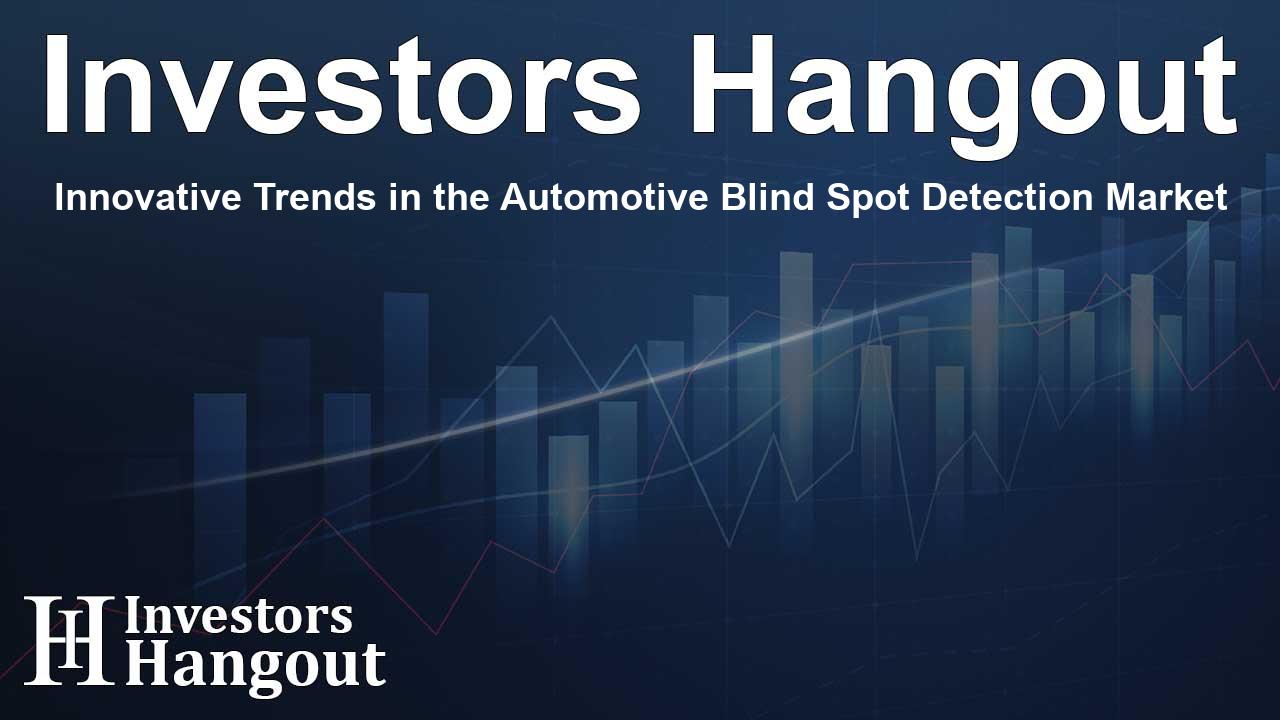Innovative Trends in the Automotive Blind Spot Detection Market

Overview of the Automotive Blind Spot Detection Market
The Automotive Blind Spot Detection System Market is experiencing significant growth, driven by the increasing demand for advanced driver-assistance systems (ADAS) and higher road safety standards. Industry experts suggest that partnerships between automobile manufacturers and key technology providers, such as Robert Bosch GmbH, Continental AG, and Denso Corporation, are sine qua non for the development of sophisticated systems embedded within both luxury and mid-range vehicles.
Market Trends and Demand Growth
The overarching demand for blind spot detection systems is being propelled by a global emphasis on safety requirements, alongside advancements in artificial intelligence and sensor technologies. These developments have led to increased accuracy in vehicle safety systems, which are now pivotal in garnering consumer trust and compliance with various regulatory mandates. For instance, the introduction of regulations aimed at enhancing vehicle safety is pushing manufacturers to integrate advanced features that satisfy consumer expectations.
Key Industry Players
The sector is populated with established players such as Aptiv and Autoliv Inc., among others. These companies are vital in spearheading technological innovation, working consistently to enhance product offerings which not only align with safety regulations but also fulfill the growing consumer demand for high-tech safety features in vehicles. This environment has created an intensely competitive landscape where research and development (R&D) activities are essential for maintaining a competitive edge.
Growth Factors Contributing to Market Expansion
Several critical factors are driving the growth of the automotive blind spot detection systems:
- Rising Road Safety Concerns: An uptick in road accidents underlines the pressing need for effective safety measures. Companies like Continental have stepped up their production significantly, showcasing the vital role of radar sensors in enhancing vehicle safety through ADAS functionalities.
- Government Safety Regulations: Globally, stricter legislation is being enacted, mandating essential safety features such as blind spot detection systems in new vehicles. This requirement is compelling car manufacturers to include such technologies in their vehicle designs, aligning with the raised bar in safety norms.
Increasing Vehicle Production
The continuous rise of vehicle production, particularly in emerging markets, is broadening the market scope for blind spot detection systems. As new vehicles are manufactured, the demand for integrated security systems grows correspondingly. The enhancing automotive sector's focus on safety technologies is highlighted in Denso Corporation's ongoing commitment to innovating reliable safety solutions.
SWOT Analysis: Automotive Blind Spot Detection Systems
Performing a SWOT analysis of the Automotive Blind Spot Detection System market reveals valuable insights:
- Strengths: Growing consumer safety awareness and the rising demand for ADAS have bolstered market penetration. Technologies like sensor fusion are enhancing trust and compliance with regulations.
- Weaknesses: The high cost of implementing these systems can limit accessibility in lower-end models. Additionally, maintaining and calibrating sensors is critical to prevent malfunctioning.
- Opportunities: Emerging markets offers opportunities as safety consciousness increases and there is a growing trend to adopt advanced technologies, especially with the rise of electric and autonomous vehicles.
- Threats: The industry faces competitive pressures leading to pricing instability. Cybersecurity risks and economic fluctuations, including recent supply chain disruptions, pose serious challenges to the market's growth.
Regional Insights on Market Dynamics
The automotive blind spot detection system market thrives across various regions: North America, Europe, Asia-Pacific, and LAMEA. Each region exhibits unique trends influenced by local regulations surrounding vehicle safety.
Frequently Asked Questions
1. What is the projected growth trajectory of the Automotive Blind Spot Detection Market?
The market is anticipated to grow significantly, aiming for an estimated value of around USD 9.97 billion by 2034.
2. Who are the top competitors in the automotive blind spot detection sector?
Prominent players include Robert Bosch GmbH, Continental AG, Denso Corporation, and Aptiv, all contributing to advancements in this area.
3. What key factors drive demand for blind spot detection systems?
Rising road safety concerns, regulatory mandates, and technological advancements are primary drivers for market demand.
4. Which regions are leading in automotive blind spot detection technology?
North America and Europe are currently at the forefront due to stringent safety regulations and advancements in automotive technology.
5. What potential opportunities exist for new market entrants?
Emerging markets present substantial opportunities as awareness increases and governments enforce stricter safety standards.
About The Author
Contact Dominic Sanders privately here. Or send an email with ATTN: Dominic Sanders as the subject to contact@investorshangout.com.
About Investors Hangout
Investors Hangout is a leading online stock forum for financial discussion and learning, offering a wide range of free tools and resources. It draws in traders of all levels, who exchange market knowledge, investigate trading tactics, and keep an eye on industry developments in real time. Featuring financial articles, stock message boards, quotes, charts, company profiles, and live news updates. Through cooperative learning and a wealth of informational resources, it helps users from novices creating their first portfolios to experts honing their techniques. Join Investors Hangout today: https://investorshangout.com/
The content of this article is based on factual, publicly available information and does not represent legal, financial, or investment advice. Investors Hangout does not offer financial advice, and the author is not a licensed financial advisor. Consult a qualified advisor before making any financial or investment decisions based on this article. This article should not be considered advice to purchase, sell, or hold any securities or other investments. If any of the material provided here is inaccurate, please contact us for corrections.
